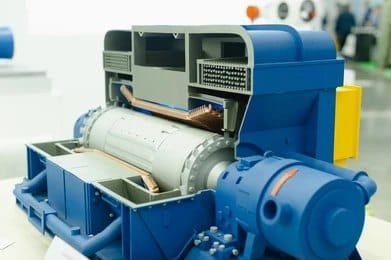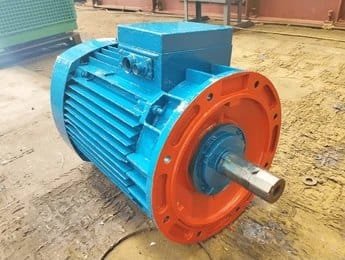What is an Upblast Exhaust Fan
An upblast exhaust fan is a roof-mounted ventilation device that expels air vertically from a building’s interior.


In the realm of electric motors, two prominent contenders stand out: the synchronous motor and the induction motor. While both serve the purpose of converting electrical energy into mechanical energy, their operating principles and characteristics differ significantly.
In this blog post, we will delve into the intricacies of synchronous and induction motors, exploring their unique features, advantages, and disadvantages.


A synchronous motor is an AC motor that operates at a constant speed, which is determined by the frequency of the electrical supply and the number of poles in the motor. The motor’s rotor rotates in synchronization with the rotating magnetic field generated by the stator windings, hence the name “synchronous motor.”
The stator of a synchronous motor consists of a set of windings that produce a rotating magnetic field when connected to an AC power source. The rotor, on the other hand, can be either a permanent magnet or an electromagnet, depending on the type of excitation used. When the stator windings are energized, the rotating magnetic field interacts with the rotor’s magnetic field, causing the rotor to rotate at the same speed as the stator field.


An induction motor, also known as an asynchronous motor, is an AC motor that operates based on the principle of electromagnetic induction. Unlike synchronous motors, which run at a constant speed determined by the frequency of the AC supply, induction motors rotate at speeds slightly lower than the synchronous speed.
The stator of an induction motor consists of windings that create a rotating magnetic field when connected to an AC power source. This rotating field induces currents in the rotor conductors, which in turn generate their own magnetic field. The interaction between the stator and rotor magnetic fields produces torque, causing the rotor to spin and convert electrical energy into mechanical energy.
The two main categories of induction motors are single-phase and three-phase motors.
Synchronous motors have a rotor with salient poles or permanent magnets, which are excited by a DC current source. The stator of a synchronous motor consists of a three-phase armature winding that produces a rotating magnetic field when connected to an AC power supply.
In contrast, induction motors have a simple rotor construction, typically featuring a cage winding or a wound rotor. The stator of an induction motor also contains a three-phase winding, similar to that of a synchronous motor. However, the rotor of an induction motor does not require a separate excitation source, as it relies on electromagnetic induction to generate torque.
Synchronous motors generally have lower starting torque compared to induction motors. They require an additional power source or an auxiliary winding to provide the necessary starting torque. Once the synchronous motor reaches its synchronous speed, it operates at a constant torque.
Induction motors have higher starting torque capabilities. They can easily start under load and do not require an additional starting mechanism. However, the torque of an induction motor decreases as the motor speed approaches the synchronous speed, resulting in a variable torque output.
Synchronous motors operate at a constant speed, which is determined by the frequency of the AC power supply and the number of poles in the motor.
Induction motors, also known as asynchronous motors, operate at speeds slightly below the synchronous speed.
Synchronous motors require an additional starting mechanism to bring the rotor up to synchronous speed. This can be achieved through the use of an auxiliary winding, a damper winding, or an external starting device such as a variable frequency drive. Once the motor reaches synchronous speed, the starting mechanism is disengaged, and the motor continues to operate at a constant speed.
Induction motors, being self-starting, do not require any additional starting mechanisms. When connected to an AC power supply, the rotating magnetic field in the stator induces currents in the rotor, creating torque and causing the rotor to rotate. As the rotor speed increases, the slip decreases until the motor reaches its rated speed.
Synchronous motors generally have higher efficiency ratings compared to induction motors, especially at full load conditions. The absence of rotor losses in synchronous motors contributes to their higher efficiency. Additionally, synchronous motors have a better power factor, which means they consume less reactive power from the power supply system.
Induction motors, while still efficient, have lower efficiency ratings compared to synchronous motors due to the presence of rotor losses. The efficiency of an induction motor varies with the load, with peak efficiency occurring at around 75% of the rated load.
Synchronous motors operate at a leading power factor, which means they can provide power factor correction to the electrical system.
Induction motors operate at a lagging power factor. They consume reactive power from the power supply system, which can lead to increased energy costs and reduced system efficiency. To compensate for the lagging power factor, additional power factor correction devices such as capacitor banks may be required in installations with induction motors.
Induction motors are widely considered one of the best motor types due to their simplicity, reliability, and cost-effectiveness. They are well-suited for many industrial applications and are available in a wide range of sizes and power ratings. However, the “best” motor type ultimately depends on the specific application requirements.